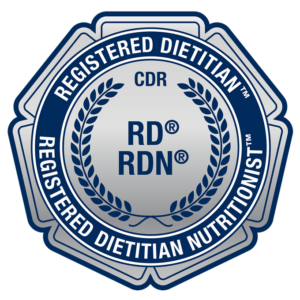Without a doubt, unforeseen circumstances in the past couple of years has taken a toll on our bodies. I hear complaints about aches, pains, and just an “off” feeling that are new and bothersome. These could be signs of inflammation caused by a number of factors. Including foods that you eat. But, instead of dwelling on what’s going wrong. Let’s focus on how to reduce inflammation. This article will address the best foods to fight inflammation.
What is Inflammation?
You may have heard of “inflammation” and how good or bad it is. In reality, there are two types of inflammation, a “good” kind and a “bad” kind. What makes inflammation good or bad for your body is how long it stays around for. You see, inflammation is your body’s way of protecting and healing itself. This is a good thing! However, when it hangs around for weeks, months, or even years, this is where it becomes a problem.
There is some great news! By using dietary and lifestyle habits to target chronic inflammation, you can prevent or reduce your risk of these diseases. Let me give you the scoop because this is not only possible, but very doable. Sometimes making small healthy habit changes can make a big difference. Research shows that there are foods, diets, and other lifestyle factors that are linked with lower levels of inflammation and lower risks for a ton of diseases. I’m here to share those with you so you can start implementing these today.
Types of Inflammation
Before we talk about the power of how dietary and lifestyle habits can fight inflammation, let’s sort out the two different types of inflammation. Inflammation is sometimes compared to a fire. It produces specific biochemicals that can destroy invaders like bacteria and viruses, increase blood flow to areas that need it, and clean up debris. It can be a good thing. But, sometimes it’s possible to have too much of a good thing. There are two kinds of inflammation: acute and chronic.
Acute Inflammation
Acute inflammation is short-lived. It’s like a flaming fire that produces the painful, red, hot, swollen symptoms described above. When inflammation is acute it’s usually at high levels in response to an infection or some kind of damage to the body. It’s necessary for proper healing and injury repair. Acute inflammation may need short-term treatment such as pain relievers or cold compresses. More serious symptoms like fever, severe pain, or shortness of breath, may need medical attention. Acute inflammation is the “good” kind of inflammation because it does an essential job and then quiets itself down.
Chronic Inflammation
Chronic inflammation is different. It’s more of the slow-burning and smoldering type of fire. Chronic inflammation can exist throughout your whole body at lower levels. This means that the symptoms aren’t localized to one particular area. Instead, they can appear gradually, and can last much longer—months or even years. This is the “bad” kind of inflammation.
Chronic inflammation is often invisible without immediate or serious symptoms. But, over the long-term it’s been linked to many chronic diseases such as:
- Acne, eczema, and psoriasis
- Allergies and asthma
- Autoimmune diseases (arthritis, type 1 diabetes, multiple sclerosis, lupus)
- Cancer
- Chronic pain
- Gastrointestinal disorders (Crohn’s disease, ulcerative colitis)
- Heart disease and stroke
- Lung diseases (emphysema)
- Mental illnesses (anxiety, depression)
- Metabolic diseases (type 2 diabetes)
- Neurodegenerative diseases (Alzheimer’s, Parkinson’s)
How does chronic inflammation begin? It may start acutely, from an infection or injury. And then, instead of shutting off, it becomes persistent. Chronic low-grade inflammation can also occur with exposure to chemicals (e.g., tobacco) or radiation. Consuming an unhealthy diet. Along with excess weight. Or, too much alcohol, low physical activity, stressed or social isolation.
Now that we see that inflammation underlies so many of our medical conditions, here’s how to put out those slow-burning, smoldering fires.
Best Foods to Fight Inflammation
“For chronic low-grade inflammation not caused by a defined illness, lifestyle changes are the mainstay of both prevention and treatment,” says Harvard Health. The good news is that foods that fight inflammation help you stay healthy and reduce your risk of many diseases. In fact, it’s estimated that 60 percent of chronic diseases could be prevented with a healthy diet. Here’s how. Enjoy foods that fight inflammation:

- Increase your intake of fruits and vegetables from 5 a day to 9 a day.
- Pay attention to the color of the rainbow. Different colors of food indicates a variety of antioxidant polyphenols. Include colorful plants such as berries, cherries, plums, red grapes, avocados, onions, carrots, beets, turmeric, green tea, and dark green leafy vegetables like spinach and kale.
- Include whole grains (brown rice, oats, bran), nuts, seeds, lean poultry, legumes (beans, lentils)
- Omega-3 fats can help to reduce pain and clear up inflammation and are found in salmon, trout, mackerel, soy, walnuts, and flax meal and healthy oil (olive, flax).
- High fiber foods (whole grains, vegetables, fruits, legumes) encourage friendly gut microbes to help reduce inflammation.
Lifestyle Tips to Fight Inflammation
Healthy eating paired with lifestyle habits can be very helpful to prevent and scale down inflammation to reduce damaging effects on the body. Practice the following lifestyle tips to fight inflammation

- Physical activity – Aim for at least 150 minutes per week of moderate-intensity activity (hint – 20-30 minutes a day)
- Get restful sleep – Aim for 7-9 hours of quality sleep to allow the body to heal and repair
- Quit smoking
- Limit Alcohol – No more then 1-2 drinks (12 ounce beer, 5 ounce wine, 1 ounce spirits)
- Stress management – engage in relaxing activities such as deep breathing, meditation, yoga or tai chi
- Be Social – Socially isolated individuals may have increased risk of physical inflammation.
- Keep up with your wellness and medical healthcare professionals – get annual labs, including inflammatory markers
Additional Support to Fight Inflammation
The first approach to prevent or improve chronic, low-level inflammation is through food and lifestyle changes. Start by focusing on adding colorful fruits and vegetables, whole grains, nuts, seeds, and fish to your diet. Then layer in lifestyle upgrades like physical activity, restful sleep, and stress management.
Interested in learning how to incorporate more foods that fight inflammation. Learn more about Nourish 2 Thrive with Plants – a Mealtime Method program. This program will not only educate you on the benefits of plants and fighting inflammation and chronic disease. Nourish 2 Thrive with Plants provides you with a proven system to get nourishing, plant-based meals to the table fast without breaking a sweat in the kitchen. In just four weeks, you’ll have a repertoire of plant-based meals and snacks you can count on to transition to plant-focused eating.
Get to know you call with Laura Cordero
When was the last time someone listened to you? Really listened and provided active feedback. The best way to see if we are a good fit is in a free introductory discovery session.


